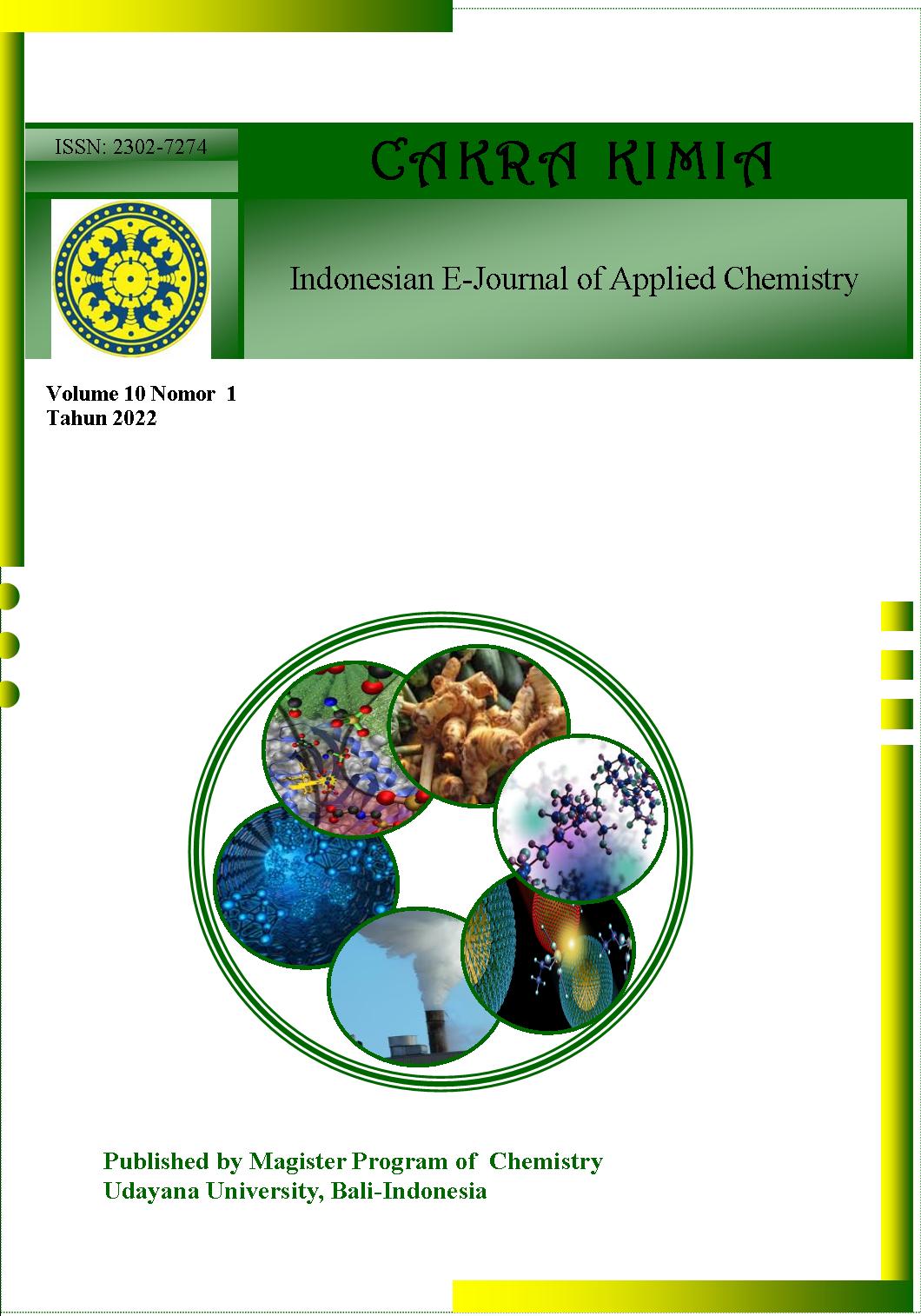PENGARUH ADITIF SELULOSA TERHADAP KARAKTERISTIK OKSIDA TIMAH YANG DIPEROLEH MENGGUNAKAN METODE HIDROTERMAL
Abstract
ABSTRAK: Material semikonduktor SnO2 merupakan oksida logam yang memiliki banyak keunggulan sehingga dapat dimanfaatkan di berbagai bidang seperti fotokatalis, sensor gas, dan bahan baku film transparan. Pada penelitian ini, SnO2 disintesis dengan menggunakan metode hidrotermal. Prekursor yang digunakan adalah SnCl2.2H2O. Tujuan dari penelitian ini adalah mengevaluasi pengaruh penambahan aditif selulosa terhadap karakteristik SnO2 yang diperoleh. Tahapan sintesis SnO2 diawali dengan melarutkan 0,9026 gram SnCl2.2H2O dalam larutan etanol air (1:2 v/v). Selulosa ditambahkan dengan perbandingan massa terhadap Sn (II) masing-masing sebesar 1:1, 2:1 dan 3:1. pH suspensi Sn (II) diatur menjadi 2,6 dengan penambahan NaOH 5 M. Proses hidrotermal dilakukan pada suhu 150°C selama 12 jam. Pengamatan secara kasat mata terhadap hasil sintesis tanpa aditif menunjukkan keberadaan serbuk hitam (SnO). Berbeda dengan hasil sintesis dengan aditif selulosa yang menunjukkan hanya serbuk warna putih kekuningan (SnO2). Perbedaan jenis oksida yang diperoleh pada proses sintesis didukung oleh hasil karakterisasi menggunakan X-ray Difraction. Analisis Scanning Electron Microscope menunjukkan perbedaan morfologi pada oksida timah yang disintesis dengan menggunakan dan tanpa aditif.
ABSTRACT: SnO2 semiconductor material is a metal oxide with many advantages, it can be used in various fields such as photocatalysts, gas sensors, and transparent film raw materials. In this study, SnO2 was synthesized using the hydrothermal method, with SnCl2.2H2O as the precursor. The purpose of this study is to evaluate the effect of cellulose additive to the characteristics of the obtained SnO2. The SnO2 synthesis was begun by dissolving 0.9026 grams of SnCl2.2H2O in an aqueous-ethanol solution (2:1 V/V). The tin oxide was prepared in the presence of additives, 1:1, 2:1, and 3:1 with the ratio additives to Sn (II). The pH of the Sn (II) suspension was adjusted to 2.6 with the addition of NaOH 5 M. The hydrothermal process was carried out at 150°C for 12 hours. Observation with the naked eye on the results of the synthesis without additives showed the presence of black powder (SnO). In contrast to the results of the synthesis with cellulose addition which showed only yellowish white powder (SnO2). The different types of oxides obtained in the synthesis process are supported by the results of characterization using x-ray diffraction. Scanning electron microscope analysis showed morphological differences in the synthesized tin oxide with and without additives.
Downloads
References
[2] Huda, A., et al. (2019). Enhancing the visible-light photoresponse of SnO and SnO2 through the heterostructure formation using one-step hydrothermal route. Materials Letters 238: 264-266.
[3] Manoj, V., et al. (2014). Synthesis of ZnO Nanoparticles using Carboxymethyl Cellulose Hydrogel. Asian Journal of Applied Sciences 7(8): 798-803.
[4] Orlandi, M. O. (2020). Tin oxide materials. Tin Oxide Materials: 1-9.
[5] Serpone, N. and A. V. Emeline (2012). Semiconductor Photocatalysis - Past, Present, and Future Outlook. J Phys Chem Lett 3(5): 673-677.
[6] Sikhwivhilu, L. M., et al. (2011). Influence of citric acid on SnO2 nanoparticles synthesized by wet chemical processes. J Nanosci Nanotechnol 11(6): 4988-4994.
[7] Tan, L., et al. (2011). Hydrothermal Synthesis of SnO2 Nanostructures with Different Morphologies and Their Optical Properties. Journal of Nanomaterials 2011: 1-10.
[8] Viet, P. V., et al. (2016). The High Photocatalytic Activity of SnO2 Nanoparticles Synthesized by Hydrothermal Method. Journal of Nanomaterials 2016: 1-8.



 Petunjuk Penulisan
Petunjuk Penulisan
